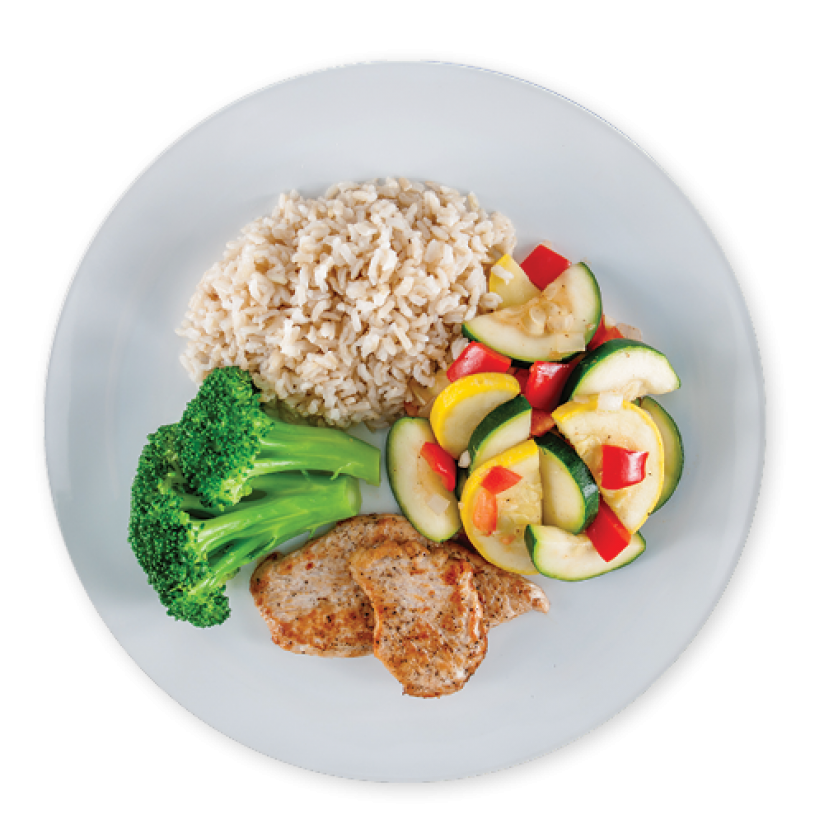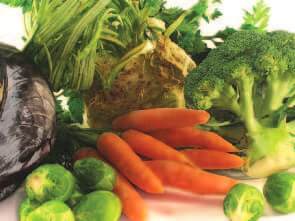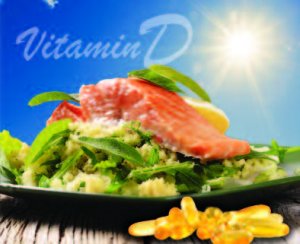by Specialdocs Consultants, LLC | Nov 20, 2017 | Nutrition, Patient News

Nutritionists Weigh in on Healthy Eating
Picturing a healthy meal has never been more accessible, thanks to the ubiquity of visual aids such as MyPlate, successor to the well-known Food Pyramid of the ‘90s. A quick scan of the plate’s quadrants enables users to see at a glance proportions of vegetables, proteins and other foods recommended for a nutritionally balanced day of healthy eating. Hailed as a significant breakthrough when it debuted in 2010, for many dietitians and health experts, MyPlate did not go far enough in revamping the American diet.
For instance, Harvard’s Healthy Eating Plate limited red meats but not healthy oils, while the American Institute of Cancer Research’s New American Plate relied even more heavily on vegetables and fruits, accounting for fully two thirds of the plate. The most recent federal guidelines, just issued for 2015-2020, now emphasize shifts needed to choose nutrient-dense foods and beverages in place of less healthy options, and the interconnected relationships between each dietary component. Illustrated at right are what a healthy, and even healthier meal, can look like at your table this year.
MyPlate breaks it down:
- A variety of vegetables from all of the subgroups—dark green, red and orange, legumes (beans and peas), starchy, and other
- Fruits, especially whole fruits
- Grains, at least half of which are whole grains
- Fat-free or low-fat dairy, including milk, yogurt, cheese and/or fortified soy beverages
- A variety of protein foods, including seafood, lean meats and poultry, eggs, legumes (beans and peas), and nuts, seeds and soy products
- Oils
- Limited saturated fats and trans fats, added sugars and sodium (less than 2,300 milligrams per day)
- Alcohol in moderation, up to one drink per day for women and up to two drinks per day for men
- Physical activity: Weekly, strive for 150 minutes of moderate intensity activity (brisk walking) and 75 minutes of vigorous intensity aerobic activity (swimming laps)
The American Institute of Cancer Research (AICR) offers a portion-controlled diet based on fruits, vegetables, whole grains and other plant-based foods that provide an array of cancer-protective compounds while serving as powerful weight-management tool. According to the AICR, the fiber and water in plant foods gives a feeling of satiety with a minimum of calories. Their main message: maintaining a healthy weight is one of the most important steps you can take to reduce your risk of cancer.
The post Healthy Eating: From Food Pyramid to MyPlate appeared first on Specialdocs Consultants.
by Specialdocs Consultants, LLC | Nov 20, 2017 | Nutrition, Patient News

Calcium, so essential to strong bones and teeth, as well as nerve transmission, muscle contraction and blood clotting, can be in short supply as we age. Exactly how much is needed of this important mineral, and Vitamin D, its companion to ensure optimal absorption, has been the subject of intense scrutiny over several decades. However, a clear cut consensus has yet to be reached from data that is by turns contradictory, reassuring or confusing. A cluster of respected studies have cast doubt on the efficacy of calcium – either in supplements or from dietary sources – in reducing the risk of osteoporosis or bone fractures. Some reports cast supplements in an even more negative light, pointing to potential side effects that range from gastrointestinal issues to increased risk of cardiovascular disease.
A quick look at research highlights, beginning with the study that arguably set the stage for use of calcium supplements in seniors, illustrates why there is still a considerable amount of debate:
- 1992: Over 18 months, a trial of elderly French women finds the number of fractures was reduced by up to 43 percent among women treated with 1200 mg of calcium and 800 units of vitamin D daily. In subsequent years, the significant levels of vitamin D deficiency of the subjects in this study created uncertainty about applying the results to healthier adults.
- 1994: Guidelines vary. National Institutes of Health recommends 1500 mg of calcium and 600-800 units of vitamin D per day for post-menopausal women; Institute of Medicine recommends 1200 mg of calcium and 400-600 units of vitamin D daily for those over 50.
- 2006: Fracture risk not reduced. A report from the Women’s Health Initiative showed that 18,000 postmenopausal women who took calcium supplements and vitamin D were no less likely to break their hips than an equal number who took a placebo pill, although the density of their hip bones increased slightly.
- 2010: Mixed results on heart issues. A report from the Women’s Health Initiative showed no significant increase in heart problems among 36,000 women who were taking calcium supplements. However a study in the British Medical Journal (BMJ) reported they were associated with an increased risk of heart attack, concluding that “a reassessment of the role of calcium supplements in the management of osteoporosis is warranted.”
- 2012: No-supplement recommendation. The U.S. Preventive Services Task Force, a panel that advises doctors on matters of public health, stated there is not enough conclusive evidence to recommend taking calcium or vitamin D supplements to prevent fractures in healthy women.
- 2015: The case against supplements builds. According to a meta-analysis in the BMJ, additional calcium from supplements may build up in the arteries or kidneys, causing heart disease or kidney stone formation. An accompanying editorial reads: “The weight of evidence against such mass medication of older people is now compelling.”
Confusing, to be sure. While the optimal dose has yet to be determined, today’s best guidelines call for calcium intake below 1,600 mg a day for women over 50 and men over 70, and 1,000 mg a day of calcium for those under 50, along with appropriate amounts of vitamin D to enhance absorption. However, experts agree, more is not necessarily better, and supplements should be considered only if the daily goal cannot be met through food sources. In addition, strength training, for arms and upper spine, and weight-bearing exercise such as walking or stair climbing, for legs, hips and lower spine, are essential to build and maintain bone density. Remember: every patient has different needs, and these can change over time.
The post Got Milk? Or Calcium Supplements? Or Neither? appeared first on Specialdocs Consultants.
by Specialdocs Consultants, LLC | Nov 20, 2017 | Nutrition, Patient News

Turkey sandwiches…soups…deli meats. Are these the building blocks of a healthy meal or stealthy contributors of excess sodium? Both, according to experts, but improved versions are in the works, thanks to June 2016 Food and Drug Administration (FDA) recommended guidelines and commitments from food manufacturers and restaurant operators to shake down the salt.
Implicated in a litany of ills from increased risk of heart disease and stroke to higher blood pressure, sodium is one of today’s major targets for elimination in the quest for a healthy diet. According to the Institute of Medicine, reducing sodium intake to 2,300 mg daily can significantly reduce blood pressure, ultimately preventing hundreds of thousands of premature illnesses and deaths. Currently, Americans consume on average, about 3,400 mg a day (a teaspoon and a half), most of it involuntarily.
“While a majority of Americans reports watching or trying to reduce added salt in their diets, the deck has been stacked against them,” the FDA stated. “The majority of sodium intake comes from processed and prepared foods, not the saltshaker.”
The guidelines set targets for reducing sodium over the next decade in the majority of processed and prepared foods, including pizza, deli meats, canned soup, snacks, breads and rolls. Already Nestle has reduced the salt in its pizzas, General Mills reduced sodium in more than 350 products, and Mars Food, Unilever and PepsiCo have pledged to follow suit.
Experts at the Harvard School of Public Health and the American Heart Association urge even further downward pressure on sodium in the diet, recommending a limit of 1,500 mg per day. Dr. Frank Sacks, the Principal Investigator in the groundbreaking Dietary Approaches to Stop Hypertension (DASH) Sodium-Trial, concurs, saying the effect of sodium intake on blood pressure is strong and causal, and called the new guidelines “a tremendous step forward to lower heart attacks and strokes in the US.”
Start shrinking the sodium in your diet with these simple, tasty strategies:
-
- Plant-based foods such as carrots, spinach, apples, and peaches, are naturally salt-free.
- Add sun-dried tomatoes, dried mushrooms, cranberries, cherries, and other dried fruits to salads and foods for bursts of flavor.
- Enhance soups with a splash of lemon and other citrus fruits, or wine; use as a marinade for chicken and other meats.
- Avoid onion or garlic salt; instead use fresh garlic and onion, or onion and garlic powder.
- Try vinegars (white and red wine, rice wine, balsamic). Maximize flavor by adding at the end of cooking time.
- For heat and spice, try dry mustard, fresh chopped hot peppers and paprika.
On vegetables:
-
- Carrots – Cinnamon, cloves, dill, ginger, marjoram, nutmeg, rosemary, sage
- Corn – Cumin, curry powder, paprika, parsley
- Green beans – Dill, lemon juice, marjoram, oregano, tarragon, thyme
- Tomatoes – Basil, bay leaf, dill, onion, oregano, parsley, pepper
On meats:
- Fish – Curry powder, dill, dry mustard, lemon juice, lemongrass, paprika, pepper, saffron
- Chicken – Poultry seasoning, rosemary, sage, tamarind, tarragon, thyme
- Pork – Cilantro, garlic, onion, sage, pepper, oregano
- Beef – Marjoram, nutmeg, paprika, sage, thyme
The post Salt Shake Down: Sodium Reduction is on the Table appeared first on Specialdocs Consultants.
by Specialdocs Consultants, LLC | Nov 20, 2017 | Nutrition, Patient News

While the evidence is not yet in on the enhanced nutritional value of organic or natural foods, consumers appear to have made their own decision. The latest research shows more than 62 percent of Americans now regularly shop for these types of products and pay premium prices for ‘farm to table’ dishes when dining out. Many questions remain, however, chief among them: what exactly is promised by these terms…and do they deliver?
The lack of official guidelines can make it difficult to identify the difference between ‘organic’ and ‘natural’ or ‘cage-free’ versus ‘free-range.’ The Food and Drug Administration (FDA) does not formally define ‘natural,’ but refers to a longstanding policy that interprets it to mean nothing artificial or synthetic has been added to a food that wouldn’t normally be expected, without addressing production, processing or manufacturing methods. Realizing the term is vague, even misleading, the FDA is solicitingpublic input until May and plans to issue more meaningful standards later this year.
For now, “’all-natural’ is more of a marketing ploy,” according to Mick Bessire, agricultural educator at Cornell Cooperative Extension. “Antibiotics can be used in production, or chickens can be raised in battery cages and have their beaks trimmed and still be called natural.”
Other frequently used terms:
Organic: A USDA Organic seal signifies that the product is made without synthetic fertilizers, irradiation, and has not been genetically modified in any way; no antibiotics or growth hormones are used in meats; 100 percent organic feed is used for livestock. The use of food additives and fortifying agents such as preservatives, artificial sweeteners and colors is severely restricted. Usually pesticide-free, too.
Hormone-Free: The best choice for hormone-free meat is products with the USDA Organic label. Hormones are already banned in egg-laying hens.
Grass-Fed: Look for an American Grass-fed Association or Animal Welfare Approved stamp, which guarantee the animal was raised on a family-owned pasture or range. Beyond the humane
benefits, some studies have found that grass-fed beef contains higher levels of healthy fatty acids and antioxidants.
Cage-Free: A voluntary label recognized by the USDA’s Agricultural Marketing Service (AMS) as birds permitted to roam, but generally without access to the outdoors.
Free-Range or Free-Roaming: Another voluntary label that indicates animals have access to the outdoors but type and duration is undefined.
Pasture-raised: Means animals roam freely and eat vegetation in their natural environment.
Certified Humane: Offers more specific guidelines for cage-free, free-range and pasture-raised labels.
White/brown eggs: Does not indicate quality or nutrition levels, but is based on the breed of the egg-laying hen.
Farm-raised fish: Frequently bred to be heavier, grow faster and can contain chemicals versus wild-caught fish. Diner beware though: according to advocacy organization Oceana’s recent study, restaurant customers were misled about salmon 43 percent of the time – ordering sustainable wild salmon as labeled on the menu, but receiving farmed salmon on their plates.
Is it worth the effort? Probably. For example, wild salmon contains far more healthy omega 3 fatty acids than farm-raised salmon. While a recent study from Mayo Clinic showed that many organically and conventionally produced foodstuffs were similar nutritionally, organic foods are inarguably less processed and more sustainable choices – good for our bodies and the environment.
The post Is What You’re Reading What You’re Eating? appeared first on Specialdocs Consultants.
by Specialdocs Consultants, LLC | Nov 20, 2017 | Nutrition, Patient News

While they may not have the crisp appeal of sugar snap peas or the sleek appearance of a summer tomato, winter’s bounty of root vegetables and greens brings some of the year’s most nutrient-rich dishes to the table. Serve up as chips or gratins, roasted or braised, mashed or raw, in soups or salads…see our recommendations for a taste of the season below.
If you like kale, try collard greens, a super-green that can be thinly sliced and used in salads, or braised with mushrooms for satisfying flavor without meat. Anti-inflammatory, antioxidant (cancer preventive) and cholesterol-lowing nutrients are on the long list of benefits.
Looking for low-carb substitutes for mashed or fried potatoes? Pureed cauliflower makes a delightful stand-in for mashed potatoes, especially when blended with Greek yogurt. Less common are Romanesco, an excellent source of vitamins C and K, fiber and carotenoids; Kohlrabi, with edible roots, leaves and stems packed with potassium and Vitamin C; and Celeriac, also known as root-celery, containing antioxidants, Vitamin K and phosphorus. For a healthy alternative to French fries, consider Jerusalem artichokes, or sunchokes, with a mellow taste and flaky texture, and plenty of energy-boosting iron and cholesterol-lowering soluble fiber. Slice matchstick-thin, mix in a sprinkle of vegetable oil, rosemary, cayenne, salt and pepper and bake for 15 minutes. Or enjoy a baked sweet potato, skin and all, for a winter treat that’s high in Vitamin A and fiber, with a minimum of calories.
Beets, high in folic acids, offer crunch, color and taste. Sautee with garlic and some olive oil or use in soups for a nutritional boost.
Change up onions with leeks, which have a milder, sweeter flavor, and compounds such as allicin that fight free radicals in your body and flavonols that may help fight cancer and lower the risk of heart disease.
Carrots are always a sturdy choice, rich in beta carotene, a compound that may reduce heart disease and certain types of cancer (although supplements are not recommended, especially for smokers), and Vitamin A, which bolsters vision and bone growth. Parsnips offer a change of pace, with a sweet flavor, double the fiber of carrots, potassium and folate for cardiovascular benefits, and almost 40 percent of the daily requirement of Vitamin K, a nutrient associated with bone health.
Winter squash, in a variety of shapes, colors and flavors, are rich in Vitamins C and A, and can be boiled, baked, roasted, simmered, steamed, microwaved or sautéed. For a low-calorie alternative to pasta, try spaghetti squash which yields long yellow strands when cooked. Sweet potato fans will enjoy butternut squash, with a similar sweet nuttiness and an even silkier texture.
Broccoli contains calcium, folate, iron, protein, Vitamins A and C and fiber, and is versatile enough to steam, roast, stir fry, puree for soups or eat raw.
Give winter salads a spin with a bowl of curly endive, radicchio, beets, fennel, kohlrabi and turnip greens. Roast or boil until tender and dress while still warm to allow the flavors to be completely absorbed.
There are many more choices in the produce aisle…go browse your local grocery store and try something new this winter!
The post Find Your Roots with Winter’s Best Veggies appeared first on Specialdocs Consultants.
by Specialdocs Consultants, LLC | Nov 20, 2017 | Nutrition, Patient News

In the multi-lettered world of vitamins and minerals, why did Vitamin D move to the top of the list…and should it be there? Following is a look at the paradox of the “sunshine vitamin,” critical to the body’s healthy function in numerous ways, but may not be important enough to warrant regular screenings, according to the latest national recommendations.
The undisputed connection between Vitamin D, the sun and bone strength was established early in the 20th century, when doctors discovered that sunlight triggers the production of Vitamin D and helped cure rickets in children. Essential for strong bones, Vitamin D helps the body absorb calcium. Unlike other vitamins, however, it is naturally present in very few foods (fish like salmon and mackerel, eggs, mushrooms and commercially fortified milk). Dr. John Cannell, who founded the Vitamin D Council to better advocate for its use, cautions: “It’s nearly impossible to get what you need from food.”
For many Americans, lack of sunshine except during the short summer season poses a concern because exposure to the sun is necessary to turn a chemical in the skin into Vitamin D. Even in sunny climates, people who spend most of their day indoors or faithfully apply sunscreen are at risk of Vitamin D deficiency, according to research that emerged in the 2000s. Low levels of the vitamin were increasingly linked to a litany of the world’s ills—cancer, heart disease, diabetes, arthritis, even depression. By 2012, researchers had discovered that Vitamin D receptors were found not only in the intestines, but in many other organs. “We know that basically every cell in your body has a Vitamin D receptor; it has been found in the brain, skeletal muscle, colon, breast, prostate, and the list goes on,” Dr. Michael F. Holick, a prominent expert at Boston University Medical Center, told Endocrine News.
Additional research bolstered the importance of Vitamin D, such as a recent British Medical Journal study that tracked more than 95,000 participants for nearly 40 years to find that genes associated with permanent low levels of Vitamin D raised the risk of early death by up to 40 percent. However, the study’s author cautioned that the relationship was not proven to be causal and therefore, no recommendations for supplements can be made.
The chicken-egg conundrum is explained by Dr. JoAnn Manson, Professor of Medicine at Harvard Medical School: “We’re at a crossroads because we really don’t know if there’s a cause and effect relationship between Vitamin D status and outcomes such as heart disease and cancer.” Obesity and lack of exercise contribute to higher rates of cancer and heart disease, so those factors could explain the illnesses, rather than a low Vitamin D level, she said.
In fact, despite the mountains of research, the U.S. Preventive Services Task Force (USPSTF) stated late in 2014 there is insufficient evidence to justify taking mega-doses of Vitamin D to prevent chronic diseases, and did not recommend regular testing of blood levels. All eyes are now on the national, 26,000-participant VITAL trial, which will conclusively report in 2017 the effects of Vitamin D or fish oil on reducing the risk of cancer, heart disease and stroke.
Different medical experts suggest different guidelines for Vitamin D supplementation. The Institute of Medicine’s guidelines state 600 IU (International Units) for ages 14 to 70, and 800 IU for age 71 and above; the Endocrine Society recommends 1,500-2,000 IU per day, and the Vitamin D Council advises “safe, sensible sun exposure, and if that’s not possible, 5,000 IU a day.” Please call my office for recommendations on the right amount of Vitamin D for you.
The post How Much Vitamin D Do We Really Need? appeared first on Specialdocs Consultants.







Recent Comments